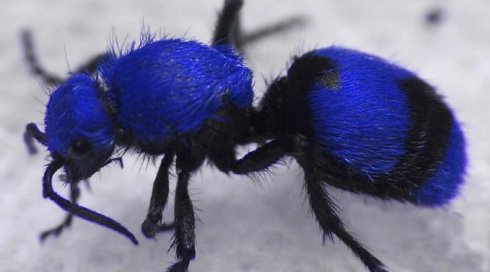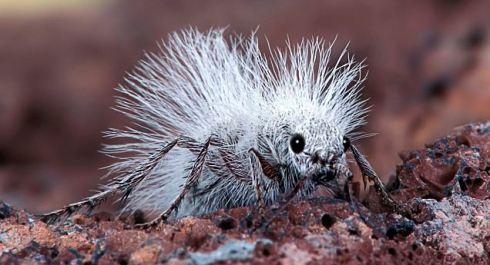
A female velvet ant (mutillidae wasp)

Male velvet ant (mutillidae wasp)
Female velvet ants are notable not just for their colorful fur but for their tremendously powerful sting which is so painful that they are nicknamed “cow killers.” Male velvet ants look like wasps but do not sting. The exoskeletons of velvet ants are tremendously hard to such an extent that some entomologists have reportedly found it difficult to drive pins through specimens. The dense hard coating helps the females invade the underground burrows of larger bees and wasps which the velvet ants sting and lay eggs on. When the velvet ant larvae hatch they feed on the paralyzed victims before metamorphosing into adult form and venturing into the world.

Blue velvet ant (female)
Velvet ants are found in warmer parts of the world particularly deserts. The majority of species are red and black but a variety of other colors are known including blue, gold, orange, and white. Unlike the social ants and termites, velvet ants are generally solitary, coming together only to reproduce with their strangely alien mates.

Source
